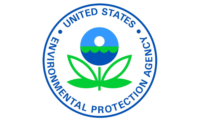EPA launches plan to safeguard drinking water from PFAS

The EPA says it has put together a nationwide plan to address PFAS - an environmental danger that has gained prominence and raised alarm in recent years.
The acronym stands for per- and polyfluoroalkyl substances, a group of man-made chemicals that have been manufactured and used in a variety of industries around the globe, including in the United States since the 1940s.
Called “forever chemicals” because they persist in the environment and in human bodies for years, PFAS has been found in drinking water in five states and dozens of communities in the U.S. The EPA says there’s evidence linking PFAS to adverse human health effects.
An ambitious plan
The Action Plan announced by the agency’s Acting Administrator, Andrew Wheeler, is a multi-media, multi-program, national communication and research plan aimed at identifying both short-term solutions for addressing these chemicals and long-term strategies that will help safeguard drinking water by addressing PFAS at the source—even before it gets into the water.
“The PFAS Action Plan is the most comprehensive cross-agency plan to address an emerging chemical of concern ever undertaken by EPA,” said EPA Acting Administrator Andrew Wheeler. “For the first time in Agency history, we utilized all of our program offices to construct an all-encompassing plan to help states and local communities address PFAS and protect our nation’s drinking water. We are moving forward with several important actions, including the maximum contaminant level process, that will help affected communities better monitor, detect, and address PFAS.”
PFAS can be found in:
- Food packaged in PFAS-containing materials, processed with equipment that used PFAS, or grown in PFAS-contaminated soil or water.
- Commercial household products, including stain- and water-repellent fabrics, nonstick products (e.g., Teflon), polishes, waxes, paints, cleaning products, and fire-fighting foams (a major source of groundwater contamination at airports and military bases where firefighting training occurs).
- Workplaces, including production facilities or industries (e.g., chrome plating, electronics manufacturing or oil recovery) that use PFAS.
- Drinking water, typically localized and associated with a specific facility (e.g., manufacturer, landfill, wastewater treatment plant, firefighter training facility).
- Living organisms, including fish, animals and humans, where PFAS have the ability to build up and persist over time.
Certain PFAS chemicals are no longer manufactured in the United States as a result of phase outs including the PFOA Stewardship Program in which eight major chemical manufacturers agreed to eliminate the use of PFOA and PFOA-related chemicals in their products and as emissions from their facilities. Although PFOA and PFOS are no longer manufactured in the United States, they are still produced internationally and can be imported into the United States in consumer goods such as carpet, leather and apparel, textiles, paper and packaging, coatings, rubber and plastics.
Steps being taken
The Action Plan describes long- and short-term actions that the EPA is taking including:
- Drinking water: EPA is moving forward with the maximum contaminant level (MCL) process outlined in the Safe Drinking Water Act for PFOA and PFOS—two of the most well-known and prevalent PFAS chemicals. By the end of this year, EPA will propose a regulatory determination, which is the next step in the Safe Drinking Water Act process for establishing an MCL.
- Clean up: EPA has already begun the regulatory development process for listing PFOA and PFOS as hazardous substances and will issue interim groundwater cleanup recommendations for sites contaminated with PFOA and PFOS. This important work will provide additional tools to help states and communities address existing contamination and enhance the ability to hold responsible parties accountable.
- Enforcement: EPA will use available enforcement tools to address PFAS exposure in the environment and assist states in enforcement activities.
- Monitoring: EPA will propose to include PFAS in nationwide drinking water monitoring under the next Unregulated Contaminant Monitoring Program. The agency will also consider PFAS chemicals for listing in the Toxics Release Inventory to help the agency identify where these chemicals are being released.
- Research: EPA will develop new analytical methods so that more PFAS chemicals can be detected in drinking water, in soil, and in groundwater. These efforts will improve our ability to monitor and assess potential risks. EPA’s research efforts also include developing new technologies and treatment options to remove PFAS from drinking water at contaminated sites.
- Risk Communications: EPA will work across the agency—and the federal government—to develop a PFAS risk communication toolbox that includes materials that states, tribes, and local partners can use to effectively communicate with the public.
The EPA says it will continue to work in close coordination with multiple entities, including other federal agencies, states, tribes, local governments, water utilities, industry, and the public in implementing the plan.
For more visit: www.epa.gov/pfas
Looking for a reprint of this article?
From high-res PDFs to custom plaques, order your copy today!







